Related Research Articles

Enrico Berlinguer was an Italian politician. Considered the most popular leader of the Italian Communist Party (PCI), he led the PCI as the national secretary from 1972 until his death during a tense period in Italy's history, which was marked by the Years of Lead and social conflicts, such as the Hot Autumn of 1969–1970. Berlinguer was born into a middle-class family; his father was a socialist who became a deputy and later senator. After leading the party's youth wing in his hometown, he led the PCI's youth wing, the Italian Communist Youth Federation (FGCI), at the national level from 1949 to 1956. In 1968, he was elected to the country's Chamber of Deputies, and he became the leader of the PCI in 1972; he remained a deputy until his death in 1984. Under his leadership, the number of votes for the PCI peaked. The PCI's results in 1976 remain the highest for any Italian left-wing or centre-left party both in terms of votes and vote share, and the party's results in 1984, just after his death, remain the best result for an Italian left-wing party in European elections, and were toppled, in terms of vote share in a lower-turnout election, in the 2014 European Parliament election in Italy.

The Italian Communist Party was a communist and democratic socialist political party in Italy. It was founded in Livorno as the Communist Party of Italy on 21 January 1921, when it seceded from the Italian Socialist Party (PSI), under the leadership of Amadeo Bordiga, Antonio Gramsci, and Nicola Bombacci. Outlawed during the Italian fascist regime, the party continued to operate underground and played a major role in the Italian resistance movement. The party's peaceful and national road to socialism, or the "Italian Road to Socialism", the realisation of the communist project through democracy, repudiating the use of violence and applying the Constitution of Italy in all its parts, a strategy inaugurated under Palmiro Togliatti but that some date back to Gramsci, would become the leitmotif of the party's history.

Benedetto "Bettino" Craxi was an Italian politician, leader of the Italian Socialist Party (PSI) from 1976 to 1993, and the 45th prime minister of Italy from 1983 to 1987. He was the first PSI member to become prime minister and the second from a socialist party to hold the office. He led the third-longest government in the Italian Republic and he is considered one of the most powerful and prominent politicians of the First Italian Republic.
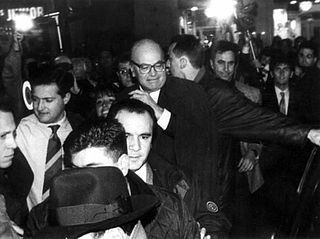
Mani pulite was a nationwide judicial investigation into political corruption in Italy held in the early 1990s, resulting in the demise of the First Italian Republic and the disappearance of many political parties. Some politicians and industry leaders committed suicide after their crimes were exposed. Antonio Di Pietro was the main judicial figure in charge of the investigation. In some accounts, as many as 5,000 public figures fell under suspicion. At one point, more than half of the members of the Italian Parliament were under indictment, while more than 400 city and town councils were dissolved because of corruption charges. The estimated value of bribes paid annually in the 1980s by Italian and foreign companies bidding for large government contracts reached US$4 billion.

The Democrats of the Left was a social-democratic political party in Italy. Positioned on the centre-left, the DS, successor of the Democratic Party of the Left (PDS) and the Italian Communist Party, was formed in 1998 upon the merger of the PDS with several minor parties. A member of The Olive Tree coalition, the DS was successively led by Massimo D'Alema, Walter Veltroni, and Piero Fassino, and merged with Democracy is Freedom – The Daisy and a number of minor centre-left parties to form the Democratic Party in October 2007.

The New Italian Socialist Party or New PSI, more recently styled as Liberal Socialists – NPSI, is a political party in Italy which professes a social-democratic ideology and claims to be the successor to the historical Italian Socialist Party, which was disbanded after the judiciary tempest of the early 1990s.

The Italian Socialist Party was a social-democratic and democratic-socialist political party in Italy, whose history stretched for longer than a century, making it one of the longest-living parties of the country. Founded in Genoa in 1892, the PSI was from the beginning a big tent of Italy's political left and socialism, ranging from the revolutionary socialism of Andrea Costa to the Marxist-inspired reformist socialism of Filippo Turati and the anarchism of Anna Kuliscioff. Under Turati's leadership, the party was a frequent ally of the Italian Republican Party and the Italian Radical Party at the parliamentary level, while lately entering in dialogue with the remnants of the Historical Left and the Liberal Union during Giovanni Giolitti's governments to ensure representation for the labour movement and the working class. In the 1900s and 1910s, the PSI achieved significant electoral success, becoming Italy's first party in 1919 and during the country's Biennio Rosso in 1921, when it was victim of violent paramilitary activities from the far right, and was not able to move the country in the revolutionary direction it wanted.
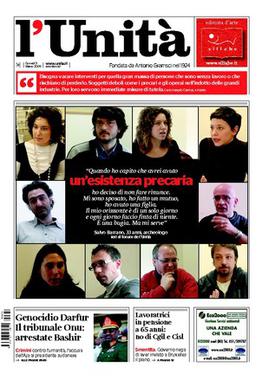
l'Unità is an Italian newspaper, founded as the official newspaper of the Italian Communist Party (PCI) in 1924. It was supportive of that party's successor parties, the Democratic Party of the Left, Democrats of the Left, and, from October 2007 until its closure in 2017, the Democratic Party.
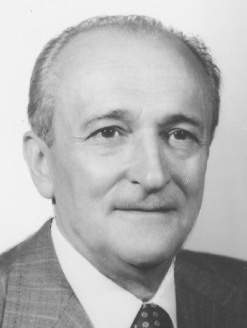
Alessandro Natta was an Italian politician and secretary of the Italian Communist Party (PCI) from 1984 to 1988. An illuminist, Jacobin, and communist, as he used to describe himself, Natta represented the political and cultural prototype of a PCI militant and party member for over fifty years of the Italian democratic-republican history. After joining the PCI in 1945, he was deputy from 1948 to 1992, a member of the PCI's central committee starting in 1956, was part of the direction from 1963 and of the secretariat, first from 1962 to 1970 and then from 1979 to 1983, and leader of the PCI parliamentary group from 1972 to 1979; he was also the director of Rinascita from 1970 to 1972. After 1991, he did not join the PCI's successor parties.

Armando Cossutta was an Italian communist politician. After World War II, Cossutta became one of the leading members of the Italian Communist Party (PCI), representing the most pro-Soviet Union tendency; his belief in that country as the leading Communist state led him to criticize Enrico Berlinguer. Later in life, although he did not regret the choice he made, Cossutta considered that he was mistaken in opposing Berlinguer.
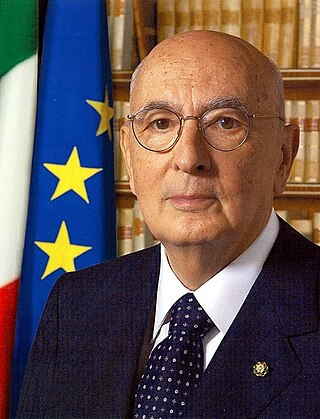
Giorgio Napolitano was an Italian politician who served as the 11th President of Italy from 2006 to 2015, the first to be re-elected to the office. In office for 8 years and 244 days, he was the longest-serving president, until the record was surpassed by Sergio Mattarella in 2023. He also was the longest-lived president in the history of the Italian Republic, which has been in existence since 1946. Although he was a prominent figure of the First Italian Republic, he did not take part in the Constituent Assembly of Italy that drafted the Italian constitution; he is considered one of the symbols of the Second Italian Republic, which came about after the Tangentopoli scandal of the 1990s. Due to his dominant position in Italian politics, some critics have sometimes referred to him as Re Giorgio.
The Movement of Unitarian Communists, or simply Unitarian Communists, was a communist political party in Italy.
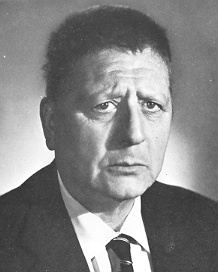
Giorgio Amendola was an Italian writer and politician. He is regarded and often cited as one of the main precursors of the Olive Tree. Born in Rome in 1907, Amendola was the son of Lithuanian intellectual Eva Kühn and Giovanni Amendola, a liberal anti-fascist who died in 1926 in Cannes after having been attacked by killers hired by Benito Mussolini. He secretly joined the Italian Communist Party (PCI) in 1929. After graduating in law, he started to propagandize opposition to the Mussolini regime.
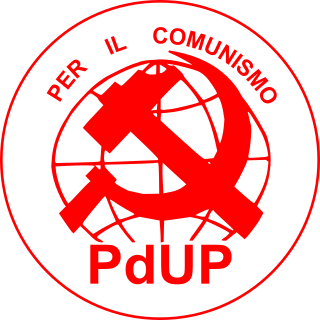
The Proletarian Unity Party was a far-left political party in Italy.
The Socialist League was a tiny social-democratic party in Italy, founded by Bobo Craxi on 10 May 2000.
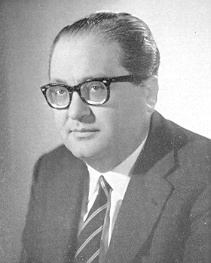
Gerardo Chiaromonte was an Italian communist politician, engineer, journalist, and writer.

Massimo D'Alema is an Italian politician and journalist who was the 53rd prime minister of Italy from 1998 to 2000. He was Deputy Prime Minister of Italy and Italian Minister of Foreign Affairs from 2006 to 2008. D'Alema also served for a time as national secretary of the Democratic Party of the Left (PDS). Earlier in his career, D'Alema was a member of the Italian Communist Party (PCI) and was the first former Communist party member to become prime minister of a NATO country and the only former PCI prime minister of Italy. Due to his first name and for his dominant position in the left-wing coalitions during the Second Republic, he is referred to as Leader Maximo. He is also the author of several books.

Vittorio Foa was an Italian politician, trade unionist, journalist, and writer.

Emanuele Macaluso was an Italian trade unionist, politician, and journalist.
References
- ↑ Malice, Teresa (2022). Transnational Imaginations of Socialism: Town Twinning and Local Government in 'Red' Italy and the GDR. Berlin: Walter de Gruyter GmbH. p. 299. ISBN 978-3-11-066742-4 . Retrieved 1 October 2023– via Google Books.
- 1 2 Vecchio, Concetto (22 September 2023). "Giorgio Napolitano è morto: se ne va il primo presidente della Repubblica eletto due volte". la Repubblica (in Italian). Retrieved 29 September 2023.
- ↑ "Napolitano: 'Io e il Pci di Berlinguer, quel sogno riformista oggi parli a tutta la società'". la Repubblica (in Italian). 30 October 2015. Retrieved 23 September 2023.
- ↑ "Napolitano e la corrente dei 'miglioristi'". Il Post (in Italian). 22 September 2023. Retrieved 23 September 2023.
- ↑ "Napolitano e Torino, un legame solido: dagli anni del migliorismo ai 150 anni dell'Unità d'Italia". La Stampa (in Italian). 22 September 2023. Retrieved 23 September 2023.
- ↑ "Giorgio Napolitano". Archivio Quirinale (in Italian). 2015. Retrieved 23 September 2023.
- ↑ "Il suo amore per il Sud e le radici". Il Mattino (in Italian). 23 September 2023. Retrieved 23 September 2023.
- ↑ Donadio, Rachel (3 December 2011). "From Ceremonial Figure to Italy's Quiet Power Broker". The New York Times. ISSN 0362-4331 . Retrieved 30 September 2023.
- ↑ Martelli, Silvia (22 September 2023). "Giorgio Napolitano, former Italian president, dies at age 98". Il Sole 24 Ore. Retrieved 26 September 2023.
- 1 2 Corbani, Luigi (23 March 2021). "Sono tutti riformisti?". Il Migliorista (in Italian). Retrieved 27 September 2023.
- 1 2 3 "Addio a Giorgio Napolitano". Atlante (in Italian). Italian Encyclopedia Institute. 22 September 2023. Retrieved 26 September 2023.
- ↑ Newell, James (2010). The Politics of Italy: Governance in a Normal Country. Cambridge: Cambridge University Press. p. 57. ISBN 978-0-521-84070-5 . Retrieved 1 October 2023– via Google Books.
- ↑ Sacchi, Paola (24 September 2023). "Vi racconto come e quando Craxi aiutò Napolitano. Parla Boniver". Startmag (in Italian). Retrieved 26 September 2023.
- ↑ Abse, Tobias (1 August 1986). "The PCI Congress" (PDF). New Left Review (I/158): 91–97. Retrieved 1 October 2023.
- ↑ Arndt, Richard T.; Rubin, David Lee (1993). The Fulbright Difference: 1948–1992. Piscataway, New Jersey: Transaction Publishers. pp. 173–174. ISBN 978-1-4128-2424-8.
- ↑ Gilbert, Mark (2014). Cold War Europe: The Politics of a Contested Continent. Lanham, Maryland: Rowman & Littlefield. pp. 294–295. ISBN 978-1-4422-1986-1.
- ↑ Italian Politics, a Review: A Publication of the Conference Group on Italian Politics and the Carlo Cattaneo Institute. F. Pinter. 1993. p. 69 . Retrieved 1 October 2023– via Google Books.
- ↑ Insardà, Francesco (27 December 2016). "Così nacquero Tangentopoli e poi il giustizialismo". Il Dubbio (in Italian). Retrieved 27 September 2023.
- 1 2 Sabelli Fioretti, Claudio (20 March 2003). "Lodovico Festa". Sette (in Italian). Retrieved 27 September 2023– via Interviste.
- ↑ "'Mani pulite-25 anni dopo', il libro. Dai pm 'manettari' ai 'comunisti salvati', ecco le post verità su Tangentopoli". Il Fatto Quotidiano (in Italian). 24 February 2017. Retrieved 30 September 2023.
- ↑ D'Angelo, Vito (12 May 1993). "I misteri di Greganti e oltre 70 inquisiti: così vacilla il mito della diversità". Corriere della Sera (in Italian). p. 3. Retrieved 28 September 2023.
- ↑ "Napolitano e quei miglioristi così vicini a Craxi". Il Fatto Quotidiano (in Italian). 20 January 2010. Retrieved 27 September 2023.
- ↑ "Tangenti metrò, assolto Cervetti". Corriere della Sera (in Italian). 6 June 1997. p. 15. Retrieved 28 September 2023.
- ↑ Frenda, Angela (27 January 2006). "La rivincita di Pollastrini capolista: Mani pulite e i miei 3 anni di dolore". Corriere della Sera (in Italian). p. 13. Retrieved 28 September 2023.
- ↑ Cimini, Frank (11 August 2011). "Gli antenati di Penati" (PDF). Panorama (in Italian). p. 66. Archived from the original (PDF) on 15 February 2019. Retrieved 28 September 2023– via uniPi.
- ↑ Di Giacomo, Michelangela (8 May 2014). "Tempo di inquietudini. La segreteria Natta raccontata da L'Unità (1984–1989)". Diacronie. Studi di Storia Contemporanea (in Italian) (17, 1). doi: 10.4000/diacronie.1127 . ISSN 2038-0925.
- ↑ "Enrico Morando. Riformisti e comunisti? Dal PCI al PD. I 'miglioristi' nella politica italiana". Circoli Dossetti (in Italian). 16 April 2011. Retrieved 29 September 2023.
- ↑ Pagni, Luca (28 February 2014). "Enrico Morando, l'ex comunista migliorista che chiedeva la privatizzazione dell'acqua". la Repubblica (in Italian). Retrieved 27 September 2023.
- ↑ Preziosi, Daniela (25 October 2019). "Morando: non andiamo con Renzi se il Pd non perde la vocazione maggioritaria". il manifesto. Retrieved 27 September 2023.
- ↑ "Emanuele Macaluso alla Stampa: 'Pd al capolinea, fra Renzi e D'Alema gara fra bugiardi'". L'Huffington Post (in Italian). 30 January 2017. Retrieved 29 September 2023.
- ↑ Rossini, Stefania (19 April 2007). "Io, Silvio e l'estasi". L'Espresso. Retrieved 28 September 2023– via Google Books.
- ↑ "Napolitano e quei miglioristi così vicini a Craxi". Il Fatto Quotidiano (in Italian). 20 January 2010. Retrieved 27 September 2023.
- ↑ "Governo, Bondi a Bersani: 'Non c'è imbarazzo per la mozione di sfiducia?'". Il Fatto Quotidiano (in Italian). 22 December 2010. Retrieved 27 September 2023.
- ↑ "Berlusconi ondeggia ma i suoi lo convincono". La Stampa (in Italian). 9 May 2006. Retrieved 27 September 2023.
- ↑ Bondi, Sandro (16 December 2010). "Cari compagni ex comunisti, vi spiego perché non dovreste sfiduciarmi". Il Foglio (in Italian). Retrieved 27 September 2023.
- ↑ Sacchi, Paola (19 October 2013). "Napolitano tra due fuochi". Panorama (in Italian). Retrieved 27 September 2023.
- ↑ Borruso, Bonifacio (9 April 2016). "Ciellini molto contesi a Milano". Italia Oggi (in Italian). No. 85. p. 10.
- ↑ "Centenario del P.C.I. 21 Gennaio 1921 − 2021: Il ruolo delle correnti nel PCI: miglioristi e cossuttiani". Iskrae (in Italian). 21 January 2021. Retrieved 27 September 2023.
- ↑ Polara, Giorgio Frasca (18 March 2016). "Misterioso, intrigante Pci. Il thriller, e non solo, di Lodovico Festa". ytali. (in Italian). Retrieved 30 September 2023.
- ↑ Piccinini, Pietro (1 March 2006). "Che fretta c'era, maledetta primavera (i dolori della vecchia Quercia)". Tempi (in Italian). Retrieved 30 September 2023.